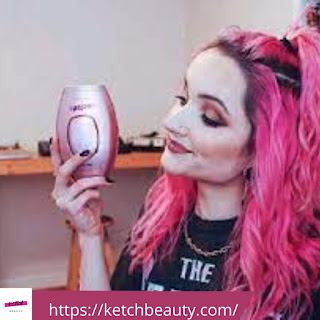What do you need to know about facial ipl hair removal therapy?
People can use Facial ipl hair removal therapy to reduce the signs of aging or remove unwanted hair. The difference is that laser therapy provides light energy in a single wavelength and IPL provides multiple wavelengths. This means that a larger area of skin can be treated in less time with IPL than with laser therapy.
This article explains how the IPL works and what it is used for. They also research the safety and efficacy of the procedure and explore the possible risks and side effects of the procedure.
How does facial
ipl hair removal work?
The Facial
ipl hair removal treatment modes are designed to provide users with a more
comprehensive and accurate treatment method. Alpha aims to provide clinicians
greater flexibility at each stage of treatment for each patient, making
treatment safer and more effective.
Doctors can provide quick, painless
treatments for tanned skin all year round. By starting treatment in a single
mode and gradually switching to a faster and less painful mode. Alpha diode
lasers can minimize the risk of hair miniaturization. This gives you the
benefits of both modes without affecting the outcome of the side effects.
Pulse technology
in facial ipl hair removal
All patients are different and have
different physiologic functions. Controlling treatment parameters is essential for
the most accurate results. Most commercial Facial
ipl hair removal devices allow the user to control energy and pulse
duration. The 3D pulse technology also provides the user with the ability to
control the temperature of the glass, thereby providing additional control and
maximum accuracy.
Medical professionals use portable
devices to direct multiple wavelengths of light at the skin. This light warms
the skin cells and breaks them down.
When to use
facial ipl hair removal?
People can choose IPL as a way to treat a
variety of skin problems. These include:
1. Acne scars.
2. Bruise.
3. Rosacea is a
condition that causes hot flashes.
4. Excessive liver
pigmentation, age spots, freckles, etc.
5. Chloasma, a
condition that causes brown or grayish-brown skin stains.
6. Scar.
7. Spider vein.
8. Cracked skin.
9. Tanned skin.
10. Wrinkles.
11. People can also
use it frequently to get rid of excess hair and tattoos.
Safety, risks,
side effects of facial ipl hair removal
Remember Hair removal ipl is safe for most people, but not for everyone. For
example, pregnant women and women taking anticoagulants should avoid IPL.
Other factors that make people unsuitable
for IPL treatment are:
1. If you are
currently or recently taking the acne drug Accutane.
2. Acne is active.
3. Suffering from
skin dysplasia.
4. Prone to keloid
scars.
5. There are
terrible scratches.
How much
effective the facial ipl hair removal is?
The effectiveness of an IPL depends on
many factors. For example, white or light brown skin is more effective than
black skin. Another factor is the type of equipment that medical professionals
use during surgery.
what can you
expect after facial ipl hair removal?
A handheld device is used to perform
light therapy. Patients may feel compression during the procedure. Some people
have described it as a feeling that resembles a rubber band that
"sticks" to the skin.
The duration and number of sessions
required will depend on each individual's treatment plan. It is worth noting
that it may take several weeks for the results of IPL treatment to become
apparent.
Frequent
questions about facial ipl hair removal
How long do the
treatments last?
The duration of treatment varies
depending on the person and the size of the part of the body to be treated.
Smaller areas, like the upper lip or armpits, can take less than 10 minutes,
while larger areas, like the back or entire legs, can take up to 40 minutes.
Do ALPHA
treatments hurt?
The treatment protocols offer maximum
comfort at every stage of treatment with built-in contact cooling and 5
treatment modes.
How long do the
results take?
Some skin types and conditions do not
require care, Hair
removal ipl while others require care sessions, usually every 6-12
months. Your doctor can give you the best advice based on your specific needs.


.jpg)

Comments
Post a Comment